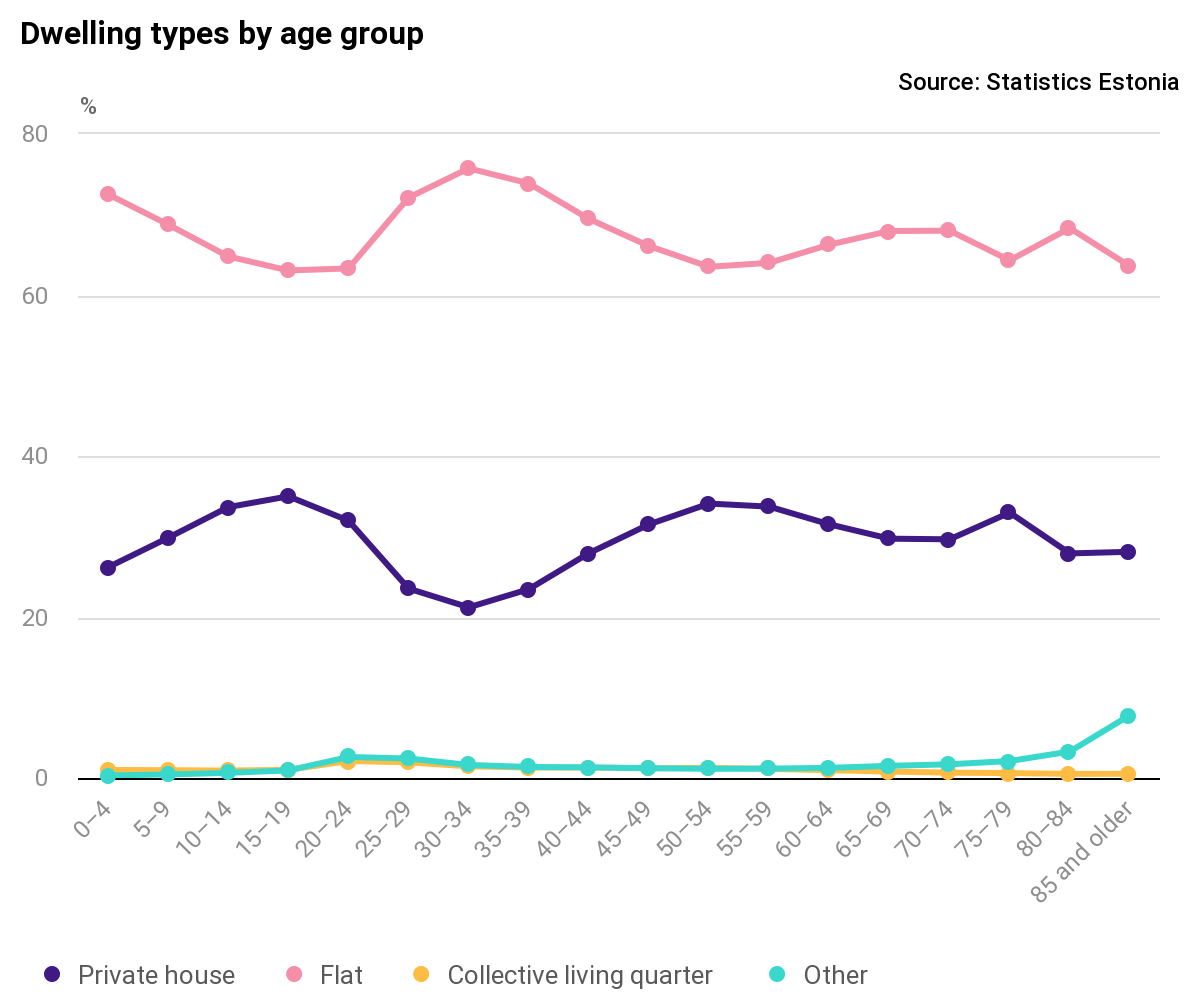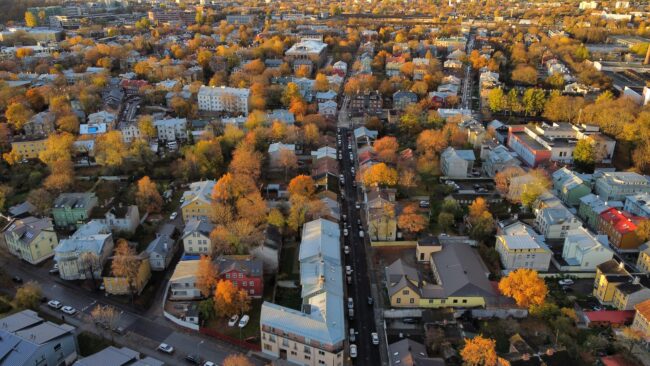The average home in Estonia is older than the average person
Text Mark Taylor Photo Matheus Frade / Unsplash
Data from the population and housing census conducted at the end of 2021 shows that in Estonia, people’s homes are on average older than they are. The number of households living in private houses has also increased.
Of the more than half a million households in Estonia, 154,422, or 27.5%, live in a private house. These households comprise of 390,855 people or 29.3% of Estonia’s total population. Compared with the 2011 census, the share of households living in private houses has increased by 0.7 per cent. The average household living in a private house has 2.53 members.
Apartments, as well as terraced and semi-detached houses, are home to 67.9% of households in Estonia. The average number of people living in such households is 2.28.
In addition to the above, 1.6% of the population live in collective living quarters such as care homes and dormitories, and 1.2% in other housing units or non-residential buildings.
When looking at the data at an individual instead of a household level, more than half of Estonia’s population, or 689,204 people in total, live in an apartment in a city.
The type of dwelling or home people live in is strongly correlated with a person’s age and life stage. The share of young people living in a private house falls and the proportion of those living in a flat rises sharply after a person reaches adulthood, as young people move to study and live in cities. There is also a slight increase in the number of persons living in other dwellings, probably due to people moving into dormitories. After the age of 35, the share of people living in a private house increases for a while and starts to decrease again after the age of 50. At the older end of the age range on the graph, we see a sharp rise in the proportion of collective living quarters, reaching 8%, which is mainly due to the increase in the share of people living in care homes.

Seven out of ten people live in a dwelling owned by a household member
71.9% of the population live in a dwelling owned by a member of their household. The share of people renting a dwelling is 18.3%. One-person households are the least likely to own a dwelling, and this is the main reason why rented accommodation is most often occupied by people living alone.
The highest proportion of owner-occupiers are found in Ida-Viru county, where 74.9% of people live in a property owned by them or another member of their household.
“The result is as expected, given that there are mainly older blocks of flats and an older-than-average population in Ida-Viru county and emigration exceeds immigration, but it is the inflow of new inhabitants that is one of the main influences on the rental market,” explained Terje Trasberg, a leading analyst at Statistics Estonia.
At the other end of the spectrum, Viljandi county has the lowest proportion of people (69%) living in household-owned dwellings. When viewed separately from county statistics, the share of dwelling owners is even lower in Tallinn and Tartu, at 68.6% and 67.8%, respectively.
The average home in Estonia is older than the average person
There are 557,146 occupied conventional dwellings in Estonia, located in more than 180,000 buildings. The average building (private house or apartment block) was constructed in 1965, while the average dwelling dates from 1972. For comparison, the average Estonian was born in 1979. Therefore, the average inhabitant’s home is older than them. The majority of people in Estonia still reside in Soviet-era buildings.
To learn more about this and similar topicsApartment Dwelling Household Housing Statistics Owner-occupiers Population Census Private House Statistics Estonia










